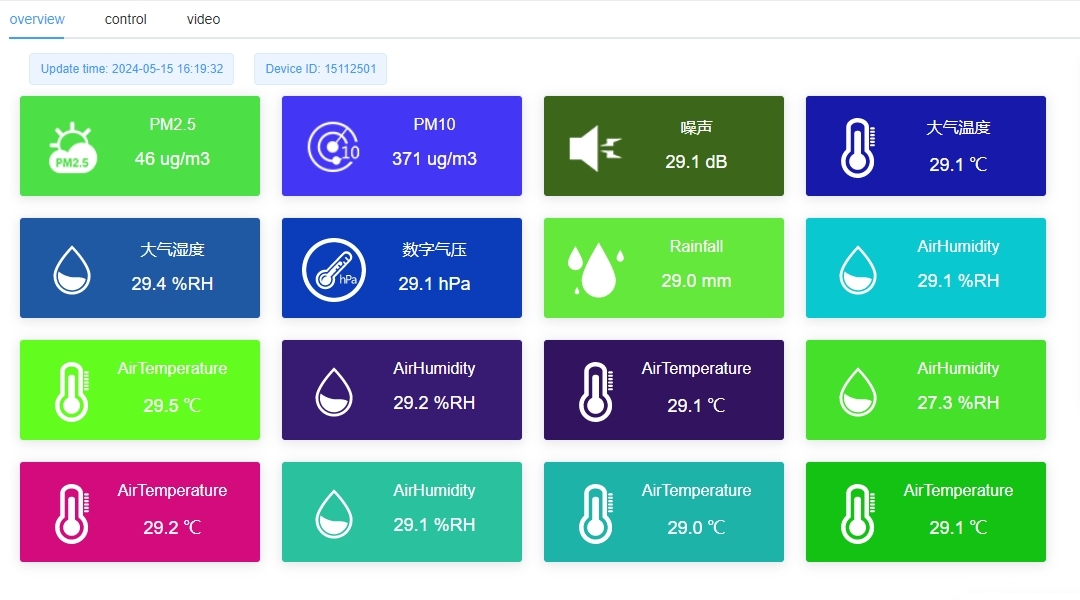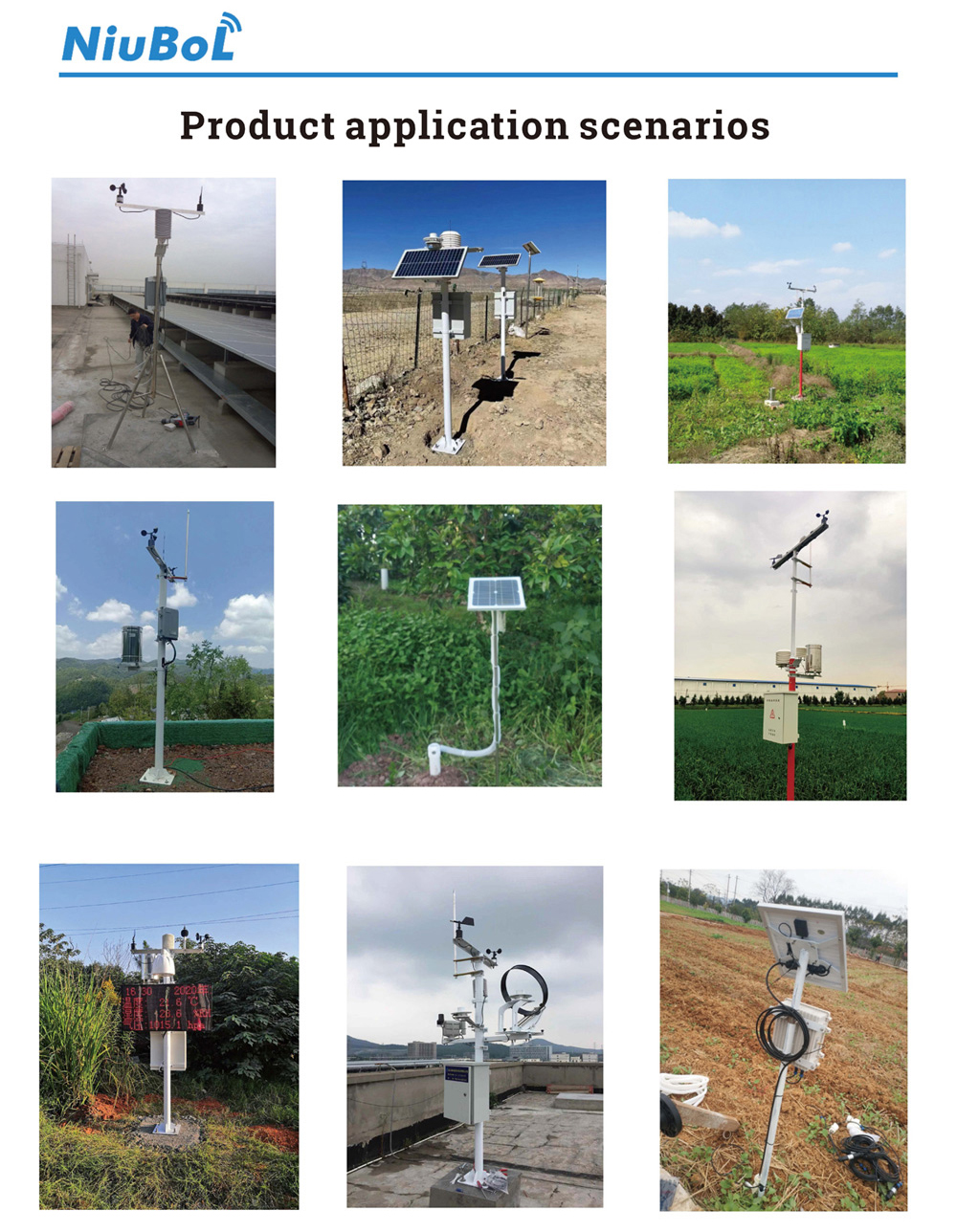

— Blogs —
—Products—
 Consumer hotline +8618073152920
Consumer hotline +8618073152920 WhatsApp:+8615367865107
Address:Room 102, District D, Houhu Industrial Park, Yuelu District, Changsha City, Hunan Province, China
Technical Support
Time:2024-05-26 10:48:44 Popularity:1995
An automatic weather station is a device that automatically collects and records meteorological data, which typically includes a collection of sensors for temperature, humidity, barometric pressure, wind speed, wind direction and precipitation. These sensors are capable of monitoring and transmitting information on atmospheric conditions in real time. Automatic weather stations can be stationary or portable, and they are used in a wide variety of environments including, but not limited to, agriculture, aviation, meteorological research, disaster warning, and sporting events.
Automatic weather stations work by collecting data on atmospheric parameters through sensors and then sending this data via radio or wired communications to a central database or directly for real-time monitoring. These stations can operate independently or be synchronised with a wider meteorological network to provide more comprehensive weather information.
Below are some of the experiences shared in the installation and maintenance of automatic weather stations:
Automatic weather station installation experience:
1. Site selection is of paramount importance: choose a location that is representative of the local meteorological characteristics and away from obstructions such as tall buildings and trees. Ensure that the installation location is open for normal observation by the sensor.
2. Stable Installation: Ensure that the bracket or mounting point of the weather station is stable and reliable, and can withstand the influence of natural factors such as wind. Use tools such as screws and spanners to ensure that the sensors and equipment are fixed.
3. Cables and connections: When connecting sensors and data collectors, ensure that the cables are connected correctly and firmly. Avoid damaged cables or poor contact, which may result in data transmission failure.
4. Lightning and protection measures: Consider installing lightning protection equipment for the weather station, such as lightning rods, grounding nets, etc., to protect the weather station from lightning. In addition, provide protective measures for sensors against sunlight and rain as needed.
5. Protective devices: install protective covers or boxes for weather stations to protect sensors from extreme weather (e.g., storms, ice, snow, etc.).
6. Solar power: In remote areas, solar panels can be used to power the weather station to ensure the stability of the power supply.
7. testing and calibration: after the installation is complete, perform tests to ensure that the sensors are working properly and calibrate them as needed. Ensure the accuracy and reliability of the data.
8. Remote Monitoring: Through the remote monitoring system, monitor the operating status of the weather station in real time and deal with it immediately once any abnormality is found.
Note: During installation, strictly follow the installation guide and instructions provided by the manufacturer. Different sensors and devices may have different installation requirements.
Automatic weather station maintenance experience:
1. Regular Inspection: Maintain and inspect the weather station regularly to ensure proper operation of the equipment. Check sensors, cables, connections, etc. for damage or wear.
2. Clean Sensors: Clean the sensor surfaces regularly to prevent dirt or dust from affecting measurement accuracy. Use appropriate cleaning tools and methods to avoid damage to the sensor.
3. Calibrate and adjust: Calibrate and adjust the sensor as needed to ensure data accuracy and reliability. This may include temperature calibration, wind speed calibration, etc.
4. Records and Documentation: Record all important information about the maintenance process, including the date of maintenance, what was maintained, parts replaced etc. This helps track the equipment's operating history and problem resolution.

5. Software updates and upgrades: Regularly check and update the data processing software of the weather station. Software updates typically include fixing known bugs, improving functionality, and adding new features.
6. Power management: Ensure stable power supply to the meteorological station. Check the status of batteries and replace damaged power components in a timely manner.
By following these installation and maintenance experiences, you can ensure the stable operation and data accuracy of the automatic weather station, and provide strong support for weather observation and forecasting.
1. Communication Stability: Ensure the stability of the data transmission channel. For wireless transmission, the signal coverage and strength need to be considered to avoid signal weakness and interference.
2. Data encryption: In order to ensure the security of data transmission, encryption technology should be used to encrypt the data to prevent the data from being intercepted or tampered with during transmission.
3. Data integrity: During data transmission, data integrity is ensured to avoid data loss or damage.
4. Transmission frequency and capacity: According to the data generation rate and data volume of the weather station, the transmission frequency and capacity are reasonably configured to ensure that the data will not be backlogged due to transmission limitations.
5. Backup transmission path: Establish a backup data transmission path in case the main path fails, the data can still be transmitted through the backup path.
1. Trouble 1: Cannot start or no display on the screen
- Check whether the power supply is connected correctly and confirm whether the power supply is normal.
- Check the startup sequence and initialisation settings to make sure there is no misuse.
2. Trouble two: Data transmission failure
- Check whether the communication interface is normal and whether the connection cable is damaged.
- Check the data transmission software settings to make sure the transmission parameters are correct.
3. Trouble 3: Abnormal sensor reading
- Check whether the sensor connection is firm, whether there is broken wire or poor contact.
- Calibrate the sensor to ensure its accuracy and reliability.
4. Trouble Four: Storage Failure
- Check if the data storage media (e.g. hard disc) is working properly.
- If it is a software problem, try to restore the factory settings or reinstall the software.
5. Trouble 5: System prompts error messages
- According to the error message prompted by the system, find the appropriate solution.
- Check the user manual or contact the manufacturer for technical support.
For the above faults, timely testing and maintenance is the key. When problems are found, they should be investigated and repaired as soon as possible to avoid data loss or equipment damage.
In conclusion, an automatic weather station is a device that can automatically collect and record meteorological data, which is widely used in agriculture, aviation, meteorological research, disaster warning and sports events. When installing and maintaining automatic weather stations, you need to pay attention to factors such as site selection, solid installation, cables and connections, lightning protection and safeguards, protective devices, solar power supply, testing and calibration, and remote monitoring.
Meanwhile, regular inspection, cleaning of sensors, calibration and adjustment, record keeping and documentation, software updates and upgrades, and power management are essential to ensure stable operation and data accuracy of automatic weather stations. During data transmission, it is important to ensure communication stability, data encryption, data integrity, transmission frequency and capacity, and backup transmission paths.

In addition, understanding common faults and solutions to automatic weather station data collectors, such as failure to start, data transmission failure, abnormal sensor readings, storage failures, and system alerts with error messages, is also critical to the proper operation of the equipment and the accuracy of the data.
Related recommendations
Sensors & Weather Stations Catalog
Agriculture Sensors and Weather Stations Catalog-NiuBoL.pdf
Weather Stations Catalog-NiuBoL.pdf
Related products
 Combined air temperature and relative humidity sensor
Combined air temperature and relative humidity sensor Soil Moisture Temperature sensor for irrigation
Soil Moisture Temperature sensor for irrigation Soil pH sensor RS485 soil Testing instrument soil ph meter for agriculture
Soil pH sensor RS485 soil Testing instrument soil ph meter for agriculture Wind Speed sensor Output Modbus/RS485/Analog/0-5V/4-20mA
Wind Speed sensor Output Modbus/RS485/Analog/0-5V/4-20mA Tipping bucket rain gauge for weather monitoring auto rainfall sensor RS485/Outdoor/stainless steel
Tipping bucket rain gauge for weather monitoring auto rainfall sensor RS485/Outdoor/stainless steel Pyranometer Solar Radiation Sensor 4-20mA/RS485
Pyranometer Solar Radiation Sensor 4-20mA/RS485
Screenshot, WhatsApp to identify the QR code
WhatsApp number:+8615367865107
(Click on WhatsApp to copy and add friends)